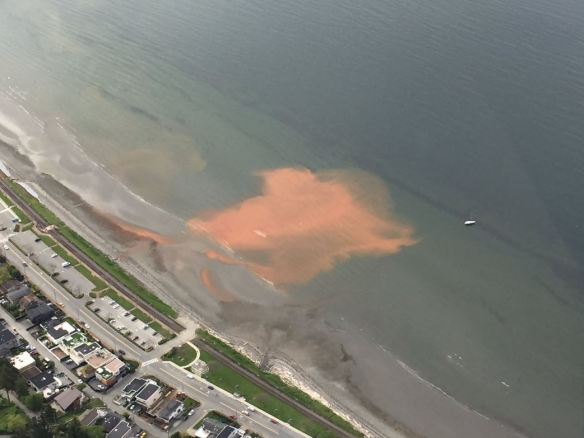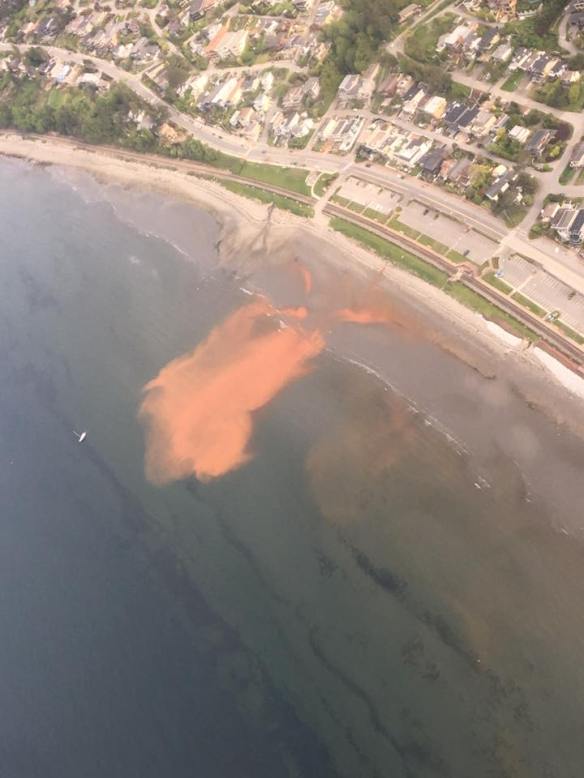
White Rock City Hall
15322 Buena Vista Ave,
White Rock, BC V4B 1Y6
January 5, 2016
Mayor: Wayne Baldwin and Council
Re: The use of Chloramine and the Potential for Damage to Aquatic Life
As you may know, on October 17, 1989 and July 9, 1990 there occurred two breaks in Surrey water mains that dumped chloramine-laced water into the Fergus Creek, which is a sub catchment of the Little Campbell River (LCR). The extreme damage to fish and benthic invertebrates officially took almost a decade for recovery but we know some damage was permanent. In fact it is only with huge recent investments by the City of Surrey, the Department of Highways and local volunteer organizations that Fergus Creek is what it is today. Some White Rock storm water flows into the LCR, some of it via Fergus Creek.
These events were a huge wake-up call. It was because of the above-mentioned spills that the Greater Vancouver Regional District followed up on this disaster by conducting extensive public consultation and then deciding on Chlorine over Chloramine for the entire Lower Mainland. Our members have seen government at all levels deal with scheduled and unscheduled pollution and have witnessed many types of failure. We recently watched the aftermath of an accident-damaged fuel tank on a truck that had poured hundreds of gallons of diesel directly into the main stem of the Little Campbell River. Firefighters and Ministry of Environment responders showed themselves hopelessly ill prepared for such an accident with inadequate oil absorption supplies. Nobody wants these kinds of disasters to fish bearing streams and while diesel fuel is toxic, some of it will evaporate but chloramine will not.
An issue unique to White Rock is the non-point pollution aspect of chloramine. It’s common knowledge that many of the strata units in White Rock contain dedicated car washes within their concrete parkades. All water from this type of activity plus power washing of parkade slabs goes directly to the ocean through storm drains. On top of that, on-street car washing, pressure washing and a portion of the at home and strata irrigation garden watering is sent directly by storm drains to the Semiahmoo Bay. Then there are city owned automatic sprinklers especially along the waterfront that suffer breakages from time to time.
Based on many years of combined watershed experience we know that very little of the water involved in the cleaning of water mains, accidental breakage of water mains, and admittedly the rare event of firefighting will ever be effectively treated to neutralize the chloramine in the water. It is a fact that chloramine run-off from water hydrants or broken mains that enter storm drains, streams, and rivers, endangers the lives of fish, amphibians, water invertebrates, and other sensitive marine animals.
There is a significant amount of evidence that identifies “vacated” and “dead” zones in marine areas adjacent to inhabited areas that use chloramine. Of course people will say that’s correlation not causation, as no one will underwrite the necessary science. The data gaps are still huge, but the people that know those areas still know what they know and chloramine is suspect.
Chloramine, which is an extremely persistent compound, is a dangerous substance in water and has been locally proven to destroy fish and benthic organisms in rivers and streams and has the potential to destroy sea life close to the ocean outfalls in Semiahmoo Bay.
The Semiahmoo First Nations once relied on the abundance of sea life in Semiahmoo Bay but over the years point and non-point pollution reduced the tens of thousands of fish available to them to just a few hundred. The abundant clams and other molluscs, which were once available all year around, were polluted too. Even the crab fishing has been diminished and here we have the City of White Rock wanting to pollute the ocean with another toxic pollutant.
The Canadian EPA ruled chloramine “toxic” as defined in Section 64 of the Canadian Environmental Protection Act, 1999, as a result of a study assessing the impact of chloraminated water discharges entering the environment, particularly on fish.
Research states that chloramine must be filtered out before it reaches bodies of water. Does White Rock really have a tested, comprehensive plan to do this and will there be a surcharge for Chloramine contaminated sewage being sent to the wastewater treatment plants in Metro before being dumped into the Gulf of Georgia?
Will you be engaging and consulting in a comprehensive review on this issue of Chloramine in the drinking water like the GVRD in the early 1990’s?
Please know that we are completely opposed to chloramine being used in White Rock water and will advocate in every possible venue against it.
There was a time when the citizens of White Rock were proud and boasted of their pure drinking water and people from miles around would come and drink the water and remark on how wonderful and different the water tasted right from the tap. It was not unusual for visitors to take jugs of water home. We understand there is a complex and changing regulatory environment. We also believe that introducing chloramine into this once pristine water supply has the potential for causing many unintended consequences.
Respectfully,
Phillip Milligan
President
Little Campbell Watershed Society
1284-184th Street, Surrey, BC V3Z 9R9
c.c. Rebecca Reid, Regional Director, Fisheries Management, DFO
c.c. Bruce Reid, Regional Oceans Manager, DFO
c.c. City of Surrey Dept. of Environment and Drainage
c.c. Semiahmoo First Nation
c.c. Drayton Harbor Shellfish Protection District
c.c. Friends of Semiahmoo Bay
c.c. Surrey Environmental Partners



